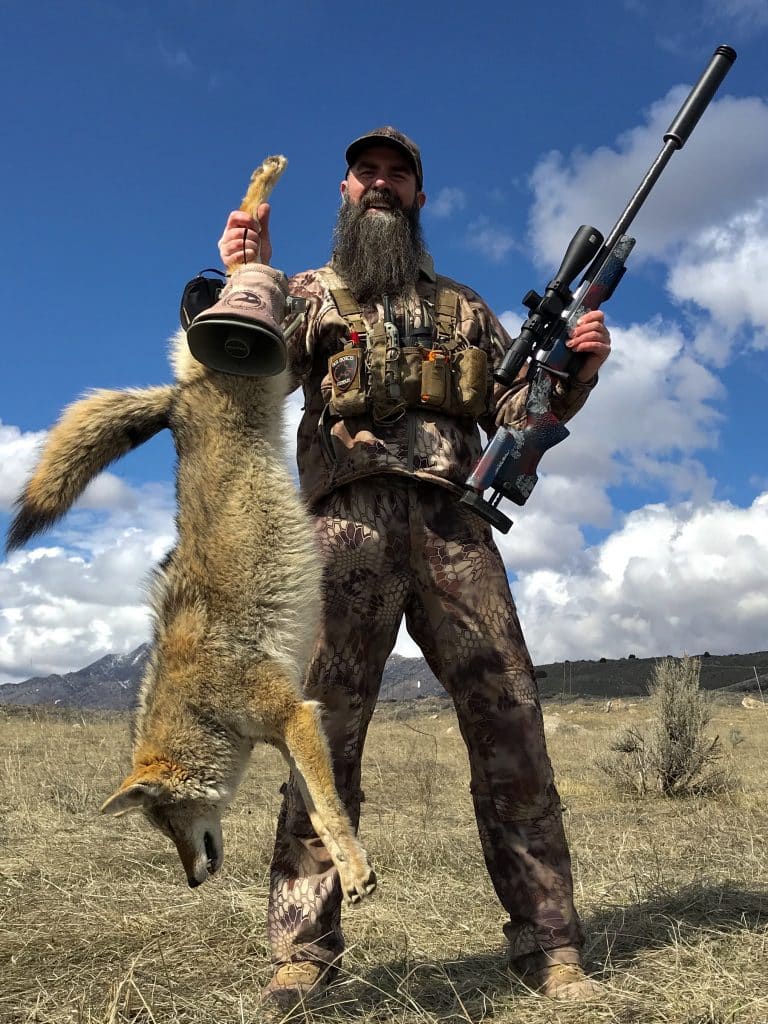
The fine, fragile hairs on the back of my neck stood on end as my ears tuned to the tone of falsetto yips piercing through the night air. The yips quickly took shape as the chattering howls strung together to form the haunting maniacal laughter of the coyote. More voices joined with the soloist creating a choir. Each singing their own song. I dug out the howler nestled within my parka pocket. Harmonizing with the coyotes, I began to sing along attempting to mimic their acute pitches that were suspended in the blackened sky.
Using hand calls to howl with the coyotes is something that everyone should experience. Anyone with opposable thumbs can press the button on the FOXPRO e-caller but it takes practice and patience to learn the coyotes language with nothing more than a Mylar reed and your own lung power. Despite the myths you may have heard, howling can be effective all year long. In my experience, the most productive time to howl up song dogs for a shooting opportunity is summer. January thru March is great as well but not quite as “hot” as the summer time howling action.
When covering the coyotes language, the length and intensity of the howl determines what is being said. The pitch of the howl simply determines WHO is saying it. For example, a bass or baritone howl is most likely an adult coyote; probably male, but could be female. An alto or soprano howl would come from a younger coyote. The sex of the younger coyote is insignificant. For that reason, its not only important to know what you’re saying when attempting to howl, but who you sound like to those listening. Younger coyotes may often feel threatened by older, alpha type coyotes and may turn tail and run. It’s important to know what the pitch-range is on your howler to know where to start your howl. Try this test and practice your pitch control. Here’s how to do it.
Begin by inserting the reed end of the howler into your mouth at a 45 degree angle upward. Place your teeth on the reed and close your lips around your teeth. Using your hand, cup the bell end of the howler and slide it into your mouth as far as it will go. Start by blowing a moderate amount of air into the howler until it produces a sound. Then while producing a sound, slowly slide the howler out of your mouth raising the pitch until the sound stops. Repeat this several times until you’re familiar with the tone board of the howler and the variation in pitches.
Next you can produce the howl of an older coyote by inserting the reed end of the howler into your mouth at a 45 degree angle upward. Place your teeth on the reed and close your lips around your teeth. Using your hand, cup the bell end of the howler and slide it into your mouth as far as it will go. Start by blowing a moderate amount of air into the howler until it produces a sound. Then while producing a sound, slowly slide the howler out of your mouth to the half-way point on the tone board. Once you reach the half way point, lift your teeth off the reed and the sound will stop. To produce a younger howl, start at the half-way point and follow the same steps. The more you practice, the better you get. The better you get, the more you kill.
Tom Austin
